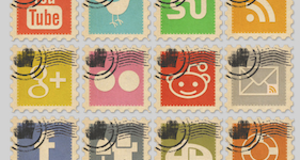Effects of the "Spiral of Silence" in Digital Media
By
2015, Vol. 7 No. 09 | pg. 2/2 | « Does the "Spiral of Silence" Exist in Digital Media?The Spiral of Silence in online media interactions may also be diluted because of the internet's global interconnectivity (Kim et. al, 2014, pp. 714-715). Cultural norms vary widely between different countries. To make matters more complicated, on a microscopic level, a country's different localities will have differing cultural norms from the country as a whole. Thus, when people from different countries and localities voice an opinion, their prevailing public opinion may be completely different from another country's (Hayes, Matthes, & Eveland, 2013, p. 442). With the diversity and relativity of different cultural opinions on a given issue, a question emerges: does gauging popular opinion necessarily have to involve direct observation of other people in their cultural environments? (Kim et. al, 2014, p. 717). Advocates of direct, physical cultural observation would argue that the internet itself is creating social isolation. When people are not interacting with other people in face-to-face conversations, there will be little to no "silencing" sanctions when that individual expresses a minority opinion (Kim et. al, 2014, p. 718). For example, a person may not be dissuaded from openly expressing their minority opinion on a comment board message. Rather, this person may be dissuaded by a large number of angry supporters of the majority opinion. Furthermore, Kim et. al (2014) argue that face-to-face interactions require physical, non-verbal cues, such as body language, clothing, hairstyle, and so forth (pp. 719-720). When we are able to assess an individual's mannerisms, we will be able to determine which locality they hail from, thus informing us ahead of time of that person's different cultural norms. Finally, when we move away from the highly-partisan online media environment and express life for ourselves, we will be able to draw our own conclusions of majority opinions within our own world. However, I would argue that direct, physical observation of the cultural environment is not entirely necessary. This is not to say that the practice isn't helpful; on the contrary, when a researcher uses a mixed-methods approach, they will have a greater chance of generalizability. However, Kim et. al (2014) have argued that digital media is the future for "netizens"—the ordinary citizens who interact on the internet (p. 717). The online media is a necessity because it is physically impossible to be everywhere there is a newsworthy story. Compared to the media of the past, digital media allows a collective group of citizen journalists to determine what is newsworthy in their own environment. Indeed, communication is not limited to face-to-face conversations in the real world (Kim et. al, 2014, p. 717). There are other ways to communicate, such as videos, pictures, flash animations, text, and many others.With the increasing number of news stories in digital media, there is more information that the public can consider. With the increased information, media consumers can raise more varied viewpoints for deliberation. However, with the diverse range of majority and minority opinions, people may think that there is increased polarization and unrest (Malaspina, 2014, p. 30). This is true for social groups that, despite popular opinions, will hold on to their views (Kim et. al, 2014, p. 718). However, this may not necessarily be the case because, thanks to the anonymous nature of the internet, individuals within groups can voice their opinion without fear of retribution (Kim et. al, 2014, p. 715; Malaspina, 2014, p. 3). With the question of the necessity of physical observation considered, does the internet function as an appropriate lab for the Spiral of Silence? Noelle-Neumann (1974) posited that the willingness to discuss a controversial issue depends on, among other factors, "sex, age, occupation, income, and residence" (p. 46). In her study, Noelle-Neumann (1974) found that men, younger people, and the middle/upper classes were more likely to speak out on a controversial issue (p. 50). With Noelle-Neumann's study in mind, it is possible to postulate that the internet is an ideal environment for the Spiral of Silence. First of all, the internet contains opinions that do span widely across sex, age, occupation, income, and residence. Second, the "millennial" generation are the most tech-savvy generation yet. As such, this younger generation is skilled with using media to convey their views, thus providing evidence that younger generations are more likely to express their views. More recent research in the decades following the theory's 1974 introduction of has yielded more uncertain results. Yun & Park's (2011) study found support in their study of a message board discussing abortion, mainly because participants had the option of identifying themselves or remaining anonymous (p. 209). Likewise, Hampton, Rainie, Lu, Dwyer, Shin, & Purcell's (2014) study on Edward Snowden's 2013 government leaks found support, as people were less likely to discuss the issue on social networking sites online than in-person. Online support for the Spiral of Silence may owe to the greater sampling of reference groups online than in-person (Dalisay, Hmielowski, Kushin, & Yamamoto, 2012, p. 326). Since there is a wide diversity of opinion, those groups who find themselves under the threat of isolation could stick together and thereby increase not only their opinion visibility, but group unity as well (Lang & Lang, 2012, pp. 382-383). However, other researchers felt that the online opinion climate did not function properly as an effective lab for the Spiral of Silence. Ho & McLeod (2008) found that participants were more likely to express their opinion regarding same-sex message online than in-person (pp. 201-202). Similarly, Liu & Fahmy (2011) found that the opinion climate on same-sex marriage was mostly unrelated with online opinion expressions, thus indicating that online opinion expressions are not affected as much by the "silencing" effect (pp. 52-54). However, Kim et. al's (2014) study about genetically-modified foods found partial support, as "netizens" are more likely to believe that the general public favors their opinions if the "netizens" express their opinions online (p. 728). In other words, given the internet's wide global reach, "netizens" can create their own self-fulfilling prophecy. Thus, following Taylor's (1982) analysis, those who believe that they are in the majority (regardless of whether they are or not) have an extra incentive to speak out (p. 311). On the other hand, Kim et. al's (2014) study found that ordinary citizens are not necessarily persuaded by the opinions of "netizens" (pp. 728-729). Kim et. al's (2014) study is especially important for opinion climate. "Netizens" and other thought leaders who have the power to create, disseminate, and influence opinions among a mass public are more likely to believe that their opinion is "correct" and "factual." Regardless of an opinion's factuality, this troubling characteristic of the opinion climate is further evidence that an issue may not be perceived correctly to begin with. This may partially-explain why media is often sensationalized to gain readership. Prolonged exposure to these "netizen" opinions may or may not convince the public, as Kim et. al's (2014) study has shown. The diversity of opinions inherent in cyberspace dramatically highlights two of the theory's key tenets. When there is a diverse "marketplace of ideas," it goes beyond the news that we consume on the news media (Lang & Lang, 2012, p. 368). In addition to disseminating opinions quicker than ever, these opinions can also be expressed differently as well, often with a hybrid of pictures, video, text, and graphics. With the diversity of opinion and expression, this can foster an atmosphere of robust debate (Nekmat & Gozenbach, 2013, p. 736). Second, the "quasi-statistical" sense of the theory has been criticized on the grounds that it cannot be quantified (Scheufele, Shanahan, & Lee, 2001, p. 306). However, not only does digital media allows media outlets to quantitatively analyze their story readership data at quickly, but it also provides a "paper-trail" of stories that can gathered and cited for evidence of prevailing opinion. Media: More Sophisticated, But Unchanged BiasesHowever, digital media may not necessarily be fostering robust debates. While there is no doubt that digital media has bombarded audiences with larger quantities of news stories in the much larger arena of cyberspace, there is still lingering doubt about the quality of these stories. This is a valid worry, as anyone can go on the internet and write about anything. In a sense, individuals can become their own news media outlets by just starting a blog, podcast, Twitter feed, or YouTube channel. When they reach a large number of dedicated media consumers, their arguments may not be logically-sound. Instead, these "media entrepreneurs" may rely on emotive, personal attacks on opinions held by influential news organizations and other thought leaders. Elizabeth Noelle-Neumann was no stranger to media bias. Noelle-Neumann (1993) believed that the mass media not only took sides to present a limited side of an issue, but they also crafted stories in a highly-accessible manner to support a certain issue stance while simultaneously downplaying opposing arguments (pp. 201-202). From a theoretical viewpoint, there is ample evidence to suggest that issues in the media are distorted and, thus, prone to reversal. In the highly-partisan U.S. media environment, partisan exposure on news issue is vastly unequal, as most mainstream news sources are overwhelmingly-liberal in nature. Despite this characteristic, it provides an excellent setting to study one of the biggest drawbacks of the theory: viewpoint pressure. There is a high amount of pressure for an individual to take the opposing sides of an issue that they do not agree with in order to remain socially-integrated within society (Kim et. al, 2014, p. 714). Liberal outlets, given that they are the most-prominent and most-accessible within the U.S., will hasten this unsettling drawback of the Spiral of Silence. In a perfect world, journalists should be raising questions on an issue to create a highly-pragmatic audience base (Lang & Lang, 2012, pp. 385-386). In today's media environment, regardless of the outlet's partisan affiliation, this is only partially true because outlets raise questions according to a particular partisan viewpoint. For example, an individual could turn on two televisions with different opposing partisan outlets discussing the same issue. However, the pictures, videos, and graphics shown by each outlet would be different to prime news anchor arguments according to a particular frame of mind. Existing literature has found that, the more an individual is involved hands-on in the issue, the more likely they will be to voice their opinion (Gearhart & Zhang, 2014, p. 20; Ho et. al, 2013, p. 119). This is understandable because, when people will be able to explain their experience in front of others, they will be able to logically-support their opinion with similar experiences shared by others. An individual's experience would likely fit into a political schema that could be picked up by the media for two reasons. First, the individual could have existing political beliefs prior to the experience. Second, the experience could re-shape their political beliefs. Among supporters of an issue that believe the issue to be of high importance, Gearhart & Zhang (2014) found that they were not only more likely to not ignore a relevant social media post, but to voice their opinions in-person and online as well (p.20). Among dissidents who did not feel that the issue was important, Gearhart & Zhang (2014) found that they were more likely to refer to their reference groups (p. 32). In today's digital media environment, the definition of "journalism" is changing as rapidly as the technological advances of the media itself. While the profession of journalism is by no means dying, it is shrinking, as evidenced by the projected 13% decline in jobs from 2012-2022 (Bureau of Labor Statistics, U.S. Department of Labor, 2014). A theory that would help to partially explain this phenomenon is the role of the citizen journalist. With the invention of the Smartphone and other portable media devices, ordinary people can send pictures and video to news organizations for broadcasts. News organizations, in turn, would need less staff to go out and find newsworthy stories. Despite the rise of the citizen journalist, partisan self-expression is not a dying breed. In fact, citizen journalists will choose which events are newsworthy to advance their agenda and will, in turn, send their stories to news outlets that are sympathetic to their political beliefs. Closely related to issue involvement is self expression (Taylor, 1982, p. 311). Like the news media's stories, there are differing ways to express an opinion (Neuwirth, 2007, p. 451). In other words, there are "two (or more) sides to every story." This can be a troubling aspect, as there is always the chance that our broadcasted opinions can be misconstrued by one or more individuals. To make the matter even more complicated, in the face of the increased globalization precipitated by global internet connectivity, our opinions may be interpreted differently. Unlike misinterpretation of our opinions, when an opinion is interpreted by a different culture, Westerners cannot simply label another culture's opinion as "right" or "wrong." At the heart of self expression is an individual or group's opinion "certainty." However, many studies have not included a variable for the "certainty" of their opinion. This is an important variable that should be examined, as it is interconnected to the present and future views on an issue because it shows any potential for opinion change in the future (Taylor, 1982, p. 332). The relationship between one's opinion certainty is important because, if there are two opposing opinions, there will be an opinion deadlock (Dalisay et. al, 2012, p. 338). One way to prevent an opinion deadlock is to measure an individual or group's knowledge of a specific issue. By showing how informed a person or group is, it can measure any levels of pluralistic ignorance (Taylor, 1982, pp. 325-326). ReferencesBoyd, D.M. & Ellison, N.B. (2007). Social network sites: Definition, history, and scholarship. Journal of Computer Mediated Communication, 13(1), 210-230. Bureau of Justice Statistics (2013, May 7). 11,101 FATAL AND 467,300 NONFATAL FIREARM VICTIMIZATIONS OCCURRED IN 2011. Retrieved from http://www.bjs.gov/content/pub/press/fv9311pr.cfm Bureau of Labor Statistics, U.S. Department of Labor (2014). Occupational Outlook Handbook, 2014-15 Edition, Reporters, Correspondents, and Broadcast News Analysts. Retrieved from http://www.bls.gov/ooh/media-and-communication/reporters-correspondents-and- broadcast-news-analysts.htm. Carpentier, F. R. D. (2014). Agenda setting and priming effects based on information presentation: Revisiting accessibility as a mechanism explaining agenda setting and priming. Mass Communication & Society, 17(4), 531-552. Dalisay, F.R., Hmielowski, J.D., Kushin, M.J., & Yamamoto, M. (2012). Social capital and the spiral of silence. International Journal of Public Opinion Research, 24(3), 325-345. Denham, B. E. (2014). Intermedia attribute agenda setting in the New York Times: The case of animal abuse in U.S. horse racing. Journalism & Mass Communication Quarterly, 91(1), 17-37. Gearhart, S. & Zhang, W. (2014). Gay bullying and online opinion expression: Testing spiral of silence in the social media environment. Social Science Computer Review, 32(1), 18-36. Glynn, C.J. and McLeod, J.M. (1984). Public opinion du jour: An examination of the spiral of silence. The Public Opinion Quarterly, 48(4), 731-740. Glynn, C.J., Hayes, A.F., & Shanahan, J. (1997). Perceived support for one's opinions and willingness to speak out: A meta-analysis of survey studies on the "spiral of silence." The Public Opinion Quarterly, 61(3), 452-463. Gozenbach, W.J. & Stevenson, R.L. (1994). Children with AIDS attending public school: An analysis of the spiral of silence. Political Communication, 11(1), 3-18. Hampton, K., Rainie, L., Lu, W., Dwyer, M., Shin, I., & Purcell, K. (2014). Social media and the 'spiral of silence.' Retrieved from http://www.pewinternet.org/2014/08/26/social-media-and-the-spiral-of-silence/ Ho, S.S., Chen, V.H.H., & Sim, CC. (2013).The spiral of silence: examining how cultural predispositions, news attention, and opinion congruency relate to opinion expression.Asian journal of communication,23(2), 113-134. Hayes, A. F., Matthes, J., Eveland, W.P. (2013).Stimulating the quasi-statistical organ: Fear of social isolation motivates the quest for knowledge of the opinion climate.Communication Research, 40(4),439 - 462. Ho, S. S., & McLeod, D. M. (2008). Social-psychological influences of opinion expression in face-to-face and computer mediated communication. Communication Research, 35(2), 190-207. Jang, S. M. (2014). Challenges to selective exposure: Selective seeking and avoidance in a multitasking media environment. Mass Media & Society, 17(5), 665-688. Judd, C.M. & Johnson, J.T. (1981). Attitudes, polarization and diagnosticity: Exploring the effect of affect. Journal of Personality and Social Psychology, 41(1), 26-36. Katz, E., Blumler, J. G., & Gurevitch, M. (1973). Uses and gratifications research. Public Opinion Quarterly, 37(4), 509-523. Kennamer, J.D. (1990). Self-serving biases in perceiving the opinions of others: Implications for the spiral of silence. Communication Research, 17(3), 393-404. Kim, S., Kim, H., & Oh, S. (2014). Talking about genetically modified (GM) foods in South Korea: The role of the Internet in the spiral of silence process. Mass Communication & Society, 17(5), 713-732. Lang, K. & Lang, G.E. (2012). What is this thing we call public opinion? Reflections on the spiral of silence. International Journal of Public Opinion Research, 24(3), 368-386. Liu, X., & Fahmy, S. (2011). Exploring the spiral of silence in the virtual world: Individuals’ willingness to express personal opinions in online versus offline settings. Journal of Media and Communication Studies, 3(2), 45-57. Maguire, B., Weatherby, G.A., & Mathers, R.A. (2002). Network coverage of school shootings. The Social Science Journal, 39(3), 465-470. Malaspina, C. (2014). The spiral of silence and social media: analysing Noelle-Neumann's phenomenon application on the web during the Italian political elections of 2013 (Doctoral Dissertation). Retrieved from http://www.lse.ac.uk/media@lse/research/mediaWorkingPapers/MScDissertationSeries/2013/105-Malaspina.pdf McDonald, D.G., Glynn, C.J., Kim, S.H., & Ostman, R.E. (2001). The spiral of silence in the 1948 presidential election. Communication Research, 28(2), 139-155. Moreno-Riaño, G. (2002). Experimental implications for the spiral of silence. The Social Science Journal, 39(1), 65-81. Moy, P., Domke, D., & Stamm, K. (2001). The spiral of silence and public opinion of affirmative action. Journalism & Mass Communication Quarterly, 78(1), 7-25. Muschert, G.W. (2007). Research in school shootings. Sociology Compass, 1(1), 60-80. Muschert, G.W. (2008). Frame-changing in the media coverage of a school shooting: The rise of Columbine as a national concern. The Social Science Journal, 46(1), 164-170. Nekmat, E. & Gonzenbach, W.J. (2013). Multiple opinion climates in online forums: Role of website source reference and within-forum opinion congruency. Journalism & Mass Communication Quarterly, 90(4), 736-756. Neuwirth, K.J. (1995): 'Testing the "spiral of silence" model: The case of Mexico.' Doctoral Dissertation, University of Wisconsin-Madison. UMI Microform 9531682. Neuwirth, K., Frederick, E., & Mayo, C. (2007). The spiral of silence and fear of isolation. Journal of Communication, 57(3), 450-468. Noelle-Neumann, E. (1974). The Spiral of Silence: A theory of public opinion. Journal of Communication, 24(2), 43-51. Noelle-Neumann, E. (1977). Turbulences in the climate of opinion: Methodological applications of the spiral of silence theory. Public Opinion Quarterly, 41(2), 143-158. Noelle-Neumann, E. (1979). Public opinion and the classical tradition: A re-evaluation. Public Opinion Quarterly, 43(2), 143-156. Noelle-Neumann, E. (1984). The spiral of silence. Chicago: University of Chicago Press. Noelle-Neumann, E. (1991). The theory of public opinion: The concept of the spiral of silence. In Anderson, J.A. (ed.) Communication Yearbook, 14, Newbury Park, CA, Sage, pp. 256- 287. Noelle-Neumann, E. (1993). The spiral of silence: Public opinion—our social skin. Chicago: The University of Chicago Press. Noelle-Neumann, E. (1994). Public opinion. In Fischer Lexikon (3rd ed.). (English language galleys self-published by Noelle-Neumann.) Noelle-Neumann, E. (1995). Public opinion and rationality. In Glasser, T.L. and Salmon, C.T. (eds.) Public Opinion and the Communication of Consent, New York, Guilford, pp. 33- 54. Office of the Surgeon General. (2001). Youth violence: A report of the Surgeon General. Retrieved from http://www.ncbi.nlm.nih.gov/books/NBK44294/ Petty, R., & Cacioppo, J. (1984). The effects of involvement on response to argument quantity and quality: Central and peripheral routes to persuasion. Journal of Personality and Social Psychology, 46(1), 69-81. Putnam, R. D. (1995). Tuning in, tuning out: The strange disappearance of social capital in America. Political Science & Politics, 28(4), 664–683. Scheufele, D.A. & Moy, P. (2000). Twenty-five years of the spiral of silence: A conceptual review and empirical outlook. International Journal of Public Opinion Research, 12(1), 3-28. Scheufele, D.A., Shanahan, J., & Lee, E. (2001). Real talk: Manipulating the dependent variable in spiral of silence research. Communication Research, 28(3), 304-324. Taylor, D.G. (1982). Pluralistic ignorance and the spiral of silence: A formal analysis. The Public Opinion Quarterly, 46(3), 311-335. Yun, G. W., & Park, S.Y. (2011). Selective positing: Willingness to post a message online. Journal of Computer Mediated Communication, 16(2), 201-227. Suggested Reading from Inquiries Journal
Inquiries Journal provides undergraduate and graduate students around the world a platform for the wide dissemination of academic work over a range of core disciplines. Representing the work of students from hundreds of institutions around the globe, Inquiries Journal's large database of academic articles is completely free. Learn more | Blog | Submit Latest in Business & Communications |


















